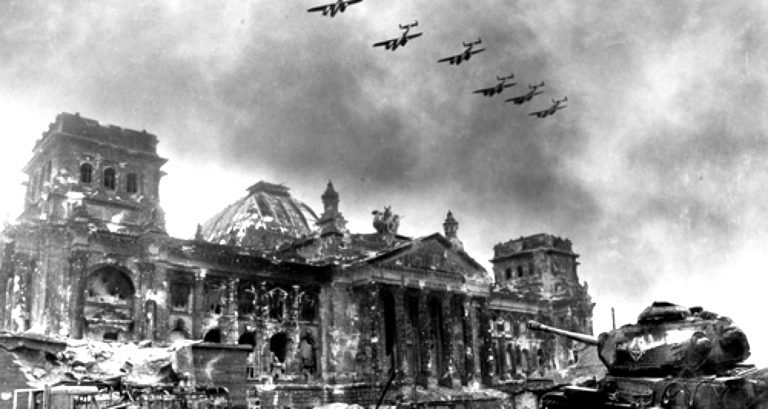The World At War

When we were kids we’d watch The World At War, a hugely popular documentary series on TV, narrated by Laurence Olivier. Anyone of my generation will have seen this, we will all remember the authentic grainy black and white footage of the second world war, scenes of total devastation, thousands of refugees traipsing across icy wastelands escaping occupied territory or direct fighting, bombed out city streets and shots of Russian or German officers arriving at European castles to plan their next attack. We all just seemed to accept the facts that were being described, the historical events displayed, the horror on screen was part of all our history, so it was sort of ‘normal’ to see it.
It was originally screened in the seventies. Many years later in the mid naughties I caught sight of it again, briefly, some clips were repeated as part of some other programme. When I saw it this time, with grown up eyes and so many years having passed, I suddenly saw for the first time the utter madness of it. It just seemed incredible that this stuff actually happened. This difference is hard to describe, because anyone seeing the footage would immediately say how awful it all was. What I’m trying to articulate is the insanity, the total unhinged mass insanity that enveloped the world at that time. I think this is the part that is so hard to grasp nowadays because we are all so used to living in peaceful well off societies here in Europe. To even comprehend this level of mass madness is somehow unreal, impossible.
I mean, if you watch thousands of soldiers marching through three foot deep mud in mid winter, dressed only in light military jackets, you just can’t really believe it. Tanks sinking in fields of mud, dead soldiers half buried in mud on abandoned battlefields, children in rags sitting in streets where all the houses are rubble, and the rubble is covered in snow. Endless columns of refugees tramping through mud, burned out villages, passing destroyed trucks and guns, clutching bundles of clothes and household items that seem incongruous, useless in their current situation. Men pushing handcarts with furniture piled up, old people sitting on the edges. It’s just mad. Completely mad. And the mud is everywhere. Endless rain and snow and winter bleakness just pours out of the screen, the biting cold of this northern war. No one talks about the cold.
So while we remember these events in 2019 on the anniversary of D-Day 6th June, and we think about the glory and the sacrifice of the great battles and the horror of the concentration camps, maybe we also should be thinking about the drudgery, the relentless misery of cold and hunger and hardship for all the ordinary citizens and the ordinary soldiers. About the millions of people displaced by this war, on all sides of the conflict. About the mass hysterical madness that must’ve seeped into society to cause this to happen, that this madness cannot have happened overnight. I would encourage all young people to watch The World At War, and consider this carefully. How mad can a society become before this kind of thing starts to happen? What do we do to make sure it never happens again?
Links
- Wikipedia https://en.wikipedia.org/wiki/The_World_at_War
- IMDB https://www.imdb.com/title/tt0071075/
- Jeremy Isaacs and David Elstein: How We Made The World at War
- Classic FM page on the music theme https://www.classicfm.com/discover-music/periods-genres/film-tv/world-at-war-theme/ (image in this blog is from this source)